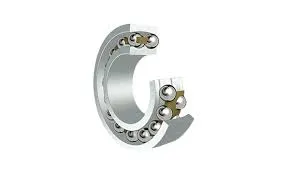
Dec . 01, 2024 10:25 Back to list
deep groove ball bearing diagram
Understanding Deep Groove Ball Bearings A Comprehensive Overview
Deep groove ball bearings are one of the most widely used types of bearings in various industries, due to their versatility, reliability, and ability to support both radial and axial loads. This article will delve into the design, function, and applications of deep groove ball bearings, providing a detailed understanding of their diagram and operational principles.
Design Features
The fundamental design of a deep groove ball bearing includes an outer ring, an inner ring, a set of steel balls, and a cage that holds the balls in place. The key characteristic that distinguishes this bearing type from others is the deep raceway grooves in both the inner and outer rings. This design allows the balls to accommodate both radial loads (forces applied perpendicular to the shaft) and axial loads (forces parallel to the shaft) from either direction.
The depth of the grooves in deep groove ball bearings is significant; it not only facilitates high load capacities but also allows for relatively high-speed operations. The geometrical arrangement ensures that the balls maintain consistent contact with the raceways, leading to reduced friction and increased durability. The materials used in the construction can vary, but most bearings are made from high-carbon chromium steel, stainless steel, or ceramic materials.
Operational Mechanism
The operational mechanism of deep groove ball bearings is straightforward yet highly efficient. As the inner ring rotates, the steel balls are set in motion, circulating along the grooves of the outer and inner rings. This rolling motion minimizes wear and tear, prolonging the lifespan of the bearing. The design also enables the bearing to maintain a predictable coefficient of friction, which is essential for efficient machine operation.
In applications where axial loads are significant, deep groove ball bearings are often used in pairs or arranged in a combination to optimize performance. This adaptability makes them suitable for various configurations, including those requiring rigid alignment and high load capacity.
Advantages
deep groove ball bearing diagram

Deep groove ball bearings offer several advantages, making them a preferred choice for many mechanical applications. Some notable benefits include
1. Versatility They can handle both radial and axial loads, making them suitable for a wide range of applications. 2. Efficiency Their design allows for low friction, which enhances energy efficiency in machines and motors.
3. Durability With proper lubrication and maintenance, deep groove ball bearings have a long operational life, reducing maintenance costs.
4. Cost-Effective Compared to specialized bearings, deep groove ball bearings are relatively inexpensive, making them accessible for various sectors.
Applications
Deep groove ball bearings are prevalent in numerous industries and applications. Common uses include
- Electric Motors They provide smooth and efficient operation in many types of electric motors. - Automotive Components Found in wheel hubs, transmissions, and various engine parts, where they support crucial rotating machinery. - Industrial Machinery Widely used in conveyor systems, pumps, and compressors, where reliable operation is paramount. - Home Appliances Found in washing machines, dryers, and other household devices, ensuring longevity and reliability.
Conclusion
In summary, deep groove ball bearings are an essential component in modern machinery, bridging the gap between various mechanical needs with their unique design and operational capabilities. Their ability to accommodate different load types, coupled with their durability and cost-effectiveness, makes them invaluable in a multitude of applications across numerous industries. Understanding their structure, functionality, and the significance of their design—reflected in the deep groove ball bearing diagram—provides insights into how they contribute to smoother, more efficient mechanical operations. As technology advances, the design and materials used in these bearings will continue to evolve, but their core principles will remain fundamentally important to engineering and manufacturing.
Latest news
-
Premium Deep Groove Ball Bearings | High Speed & Reliability
NewsAug.29,2025
-
Durable Scaffolding Clamps - Secure & Reliable Tube Connectors
NewsAug.28,2025
-
Common Failures in Thrust Ball Bearings and Solutions
NewsAug.22,2025
-
How Tapered Roller Bearings Can Take Shock Loads
NewsAug.22,2025
-
Angular Bearings in High-Precision Spindles
NewsAug.22,2025
-
The Impact of Misalignment on Cylindrical Roller Bearing Performance
NewsAug.22,2025
